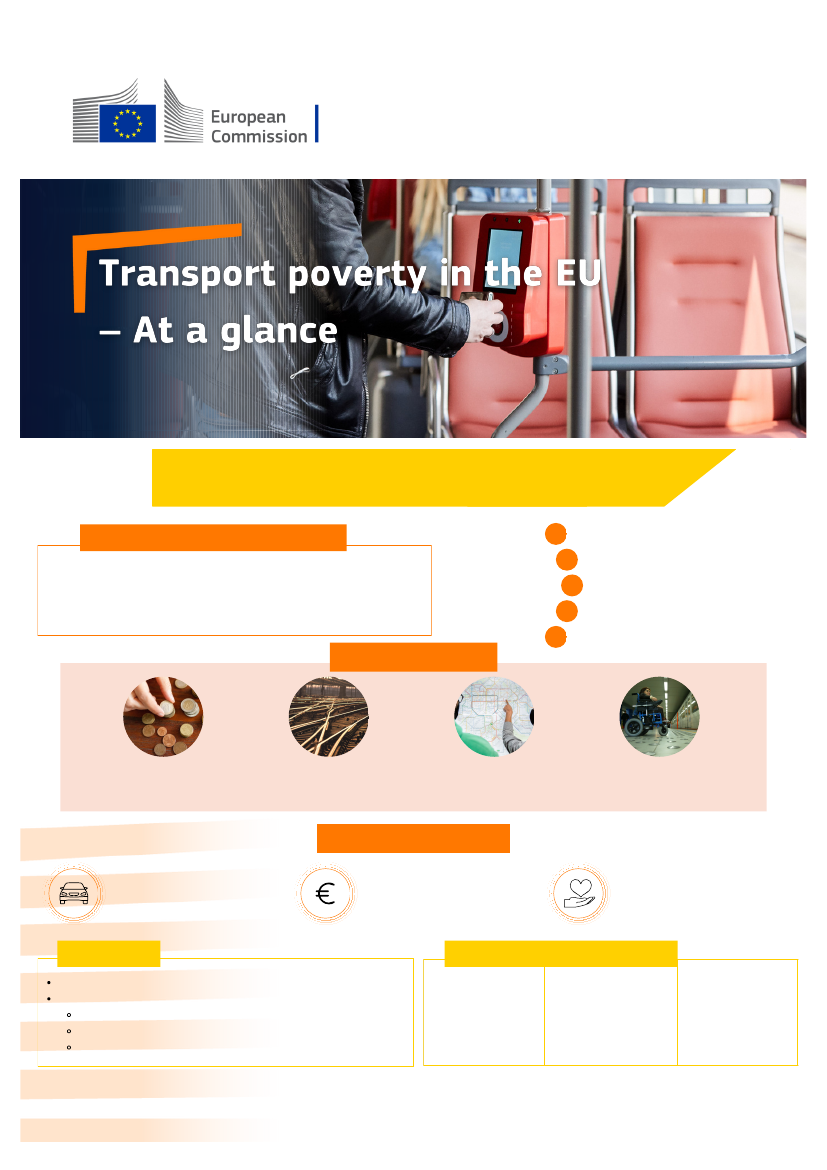
May 2025
Transport is
essential for jobs, education, health, and inclusion.
Tackling transport poverty supports climate goals, social fairness, and regional equity.
What is Transport Poverty?
Difficulty or inability to
afford or access
the transport
needed to reach essential services like work, education, and
healthcare.
Rural, peri-urban & remote communities
Who is
affected?
Older people and persons with disabilities
People without private vehicles
Low-income households
Young people
Key Dimensions
Affordability
Can people pay for transport?
Availability
Is transport physically present?
Accessibility
Can it reach key destinations?
Adequacy
Is it safe, reliable, inclusive?
Facts & Figures
In 12 Member States,
30%+ of
low-income families
with children
cannot afford a car
People in
peri-urban areas
often
face the
highest transport costs
The Social Climate Fund will
mobilise
€86.7 billion
to support
vulnerable groups
EU response
Social Climate Fund
to support access to clean, affordable transport
Commission recommends Member States to:
Integrate transport poverty into existing strategies
Cooperate with and empower regional and local actors
Target support to vulnerable groups
Key actions for governments
Plan
strategically –
integrate transport
equity into national
planning
Invest sustainably
–
improve public
transport, cycling,
shared electric
mobility
Ensure fairness –
focus on
vulnerable groups
© European Union, 2025
Reuse of this document is allowed, provided appropriate credit is given and any changes are indicated (Creative
Commons Attribution 4.0 International license). For any use or reproduction of elements that are not owned by the EU,
permission may need to be sought directly from the respective right holders. All photos © European Commission
Luxembourg: Publications Office of the European Union, 2025
PDF Web ISBN 978-92-68-27767-6
doi:10.2832/6699007
MI-01-25-031-EN-N